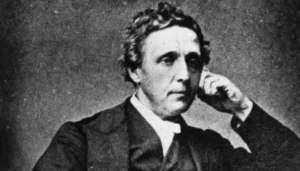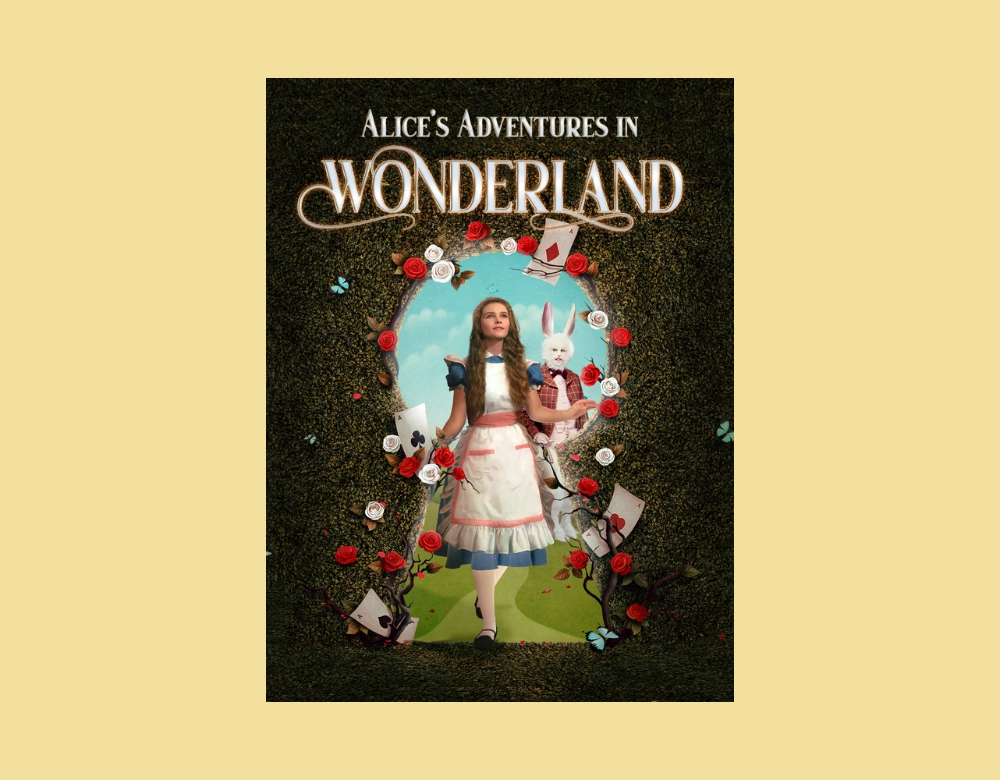Charles Dodgson’s Secret Life and the Birth of Wonderland
So, let’s get the record straight on Lewis Carroll. That wasn’t his real name, obviously. He was actually Charles Lutwidge Dodgson, a super-smart but totally introverted mathematician and logician who taught at Christ Church, Oxford. Imagine your college calculus professor, but way funnier and with a hidden life writing some of the weirdest, most beloved books ever. That’s him. Born in 1832, his personal life was intensely private, but his imagination was anything but.
- The River Trip: The book literally began on a lazy boat trip down the Thames on July 4, 1862. He was telling stories to the young daughters of the Dean of Christ Church, including Alice Liddell, who totally demanded he write the story down. Thank goodness she did, right?
- The Logician’s Playground: The book isn’t just random chaos; it’s actually a brilliant parody of mathematical logic and Victorian rigidness. He was taking the rules of language and logic and just breaking them on purpose. That’s a total expert move.
The Philosophical Engine: What Carroll Was Really Laughing At
Carroll’s core philosophy, if you can call it that, is the absolute power of nonsense to reveal the ridiculousness of “sense.” He basically used a girl falling down a rabbit hole to point out that the grown-up Victorian world with its fussy rules, terrible poetry, and obsession with etiquette was way more absurd than anything the Mad Hatter could cook up.
| Core Philosophical Theme | What it Means (The Gist of the Absurd) |
| Logic vs. Chaos | The entire book is an experiment in illogic. Every conversation is a brilliant, totally frustrating failure of communication, showing how easily language breaks down when arbitrary rules are applied (or ignored). That’s the fun of it. |
| The Pains of Growing Up | Alice spends the whole book constantly changing size and trying to remember who she is. It’s a hilarious, unsettling metaphor for the totally confusing, identity-crushing process of going from child to adult. |
| Satire of Victorian Pedantry | Carroll totally skewers the awful, moralistic Victorian children’s books and the relentless focus on rote learning. The parodies of famous poems in the book? They’re hilarious digs at terrible contemporary verse. |
| Arbitrary Authority | The Queen of Hearts’ entire kingdom operates on the terrifying, childish, and totally illogical command: “Off with her head!” It’s a perfect send-up of unearned, nonsensical political power. |
Required Reading: Why Wonderland Still Matters

The Must-Read Status for Students in a Modern World
If you’re studying philosophy, literary theory, linguistics, or even computer science (seriously, logic gates!), Lewis Carroll’s Alice’s Adventures in Wonderland is absolutely fundamental reading. It’s not just a cute kids’ book; it’s a brilliant exercise in metaphysics and semantics.
It is absolutely crucial for students because:
- Linguistic Analysis: It’s the ultimate example of Literary Nonsense. Studying it teaches you how language creates reality, and what happens when the connection between the word and the thing it represents is totally severed. That’s a huge concept.
- Psychological Exploration: It serves as a fantastic (if totally weird) early example of exploring the subconscious mind the dream logic, the fluidity of identity. It anticipates the psychological depth that would later define the 20th century.
- Cultural Touchstone: It provides a universal language of absurdity the Mad Hatter, the Cheshire Cat. Understanding these archetypes is essential for engaging with modern media and art that constantly reference them.
What to Read Next: Digging Deeper into Logic and Nonsense
Once you’ve left Wonderland, you’ll probably want to explore other works that play with logic, language, and the nature of reality.
| Recommended Reading | The Direct Connection to Carroll’s Themes |
| Through the Looking-Glass (Lewis Carroll) | The immediate sequel. It’s built on the rigid, backwards logic of a game of chess, continuing the linguistic and philosophical games with even greater complexity. Essential follow-up. |
| The Phantom Tollbooth (Norton Juster) | A modern American children’s novel that uses a journey to explore mathematical, geographical, and logical concepts. It’s essentially an homage to Carroll’s technique of making abstract concepts literal. |
| Catch-22 (Joseph Heller) | A military novel, but it’s built entirely on Catch-22 logic a totally paradoxical loop that demonstrates the extreme absurdity and crushing illogic of institutional power. It’s Carroll for adults in wartime. |
From Page to Pop Culture: The Infinite Adaptations of Alice
The Theatrical and Visual Legacy of Carroll’s Dream
The influence of Alice in Wonderland is absolutely massive, and kind of never-ending. Why? Because the book is, visually, just pure, bright, beautiful chaos. The characters are completely unforgettable, and the world itself is a director’s playground, demanding every medium from film to ballet to go totally wild with the visual spectacle.
It set a standard for using surreal imagery to represent psychological states and has influenced everything from Salvador Dalí’s art to every single psychedelic rock album cover ever made. Seriously.
- On Direction: It popularized the use of extreme visual transformation (shrinking/growing) and the mixing of animated/live-action elements. The entire world of Wonderland is a special effect.
- Performance: The characters demand completely over-the-top, highly theatrical performances, especially the Hatter and the Queen of Hearts. They are totally defined by their rigid, hilarious eccentricities.
Key Adaptations: Alice Across Stages and Screens
The story has been constantly adapted, sometimes brilliantly, sometimes, well, weirdly. But it always finds a new stage.
| Adaptation Type | Key Example/Details | Why It’s Famous/Relevant |
| The 1951 Disney Film | The classic animated version. Defined the visual look of the characters for the entire 20th century. | It captures the manic energy and the absurdity, though it downplays the book’s complex, linguistic satire. It’s the pop culture baseline. |
| The 2010 Film | Directed by Tim Burton, starring Johnny Depp. A darker, more gothic take on the world. | Showed how the underlying themes of chaos and identity could be retooled for modern blockbuster cinema, using heavy CGI to create the surreal landscape. |
| Ballets/Operas | Often adapted for dance because the character’s movements (the Hatter’s twitching, the Queen’s rage) are so totally defined and visually interesting. | Proves the story’s non-verbal power; the absurdity works even without the totally confusing dialogue. |
Final Thoughts: The Enduring Riddle of Wonderland
So, we finish this rabbit-hole deep dive into Alice’s Adventures in Wonderland. Why does this book, based on the summer ramblings of an Oxford don, still hold such massive power over our collective imagination? Because it’s more than just a dream; it’s a total, brilliant demolition of all the rigid rules we try to impose on the world.
- Lewis Carroll basically wrote the ultimate book about asking, “Why?” It forces us to question language, law, authority, and even our own size.
- The book’s greatest legacy is that it validated playfulness and nonsense as crucial tools for serious intellectual inquiry. It showed that the shortest path to truth is often through total absurdity.
The final, essential takeaway? Grown-up reality is often just as nonsensical as a tea party with a talking dormouse. It’s a timeless, total blast of genius.

